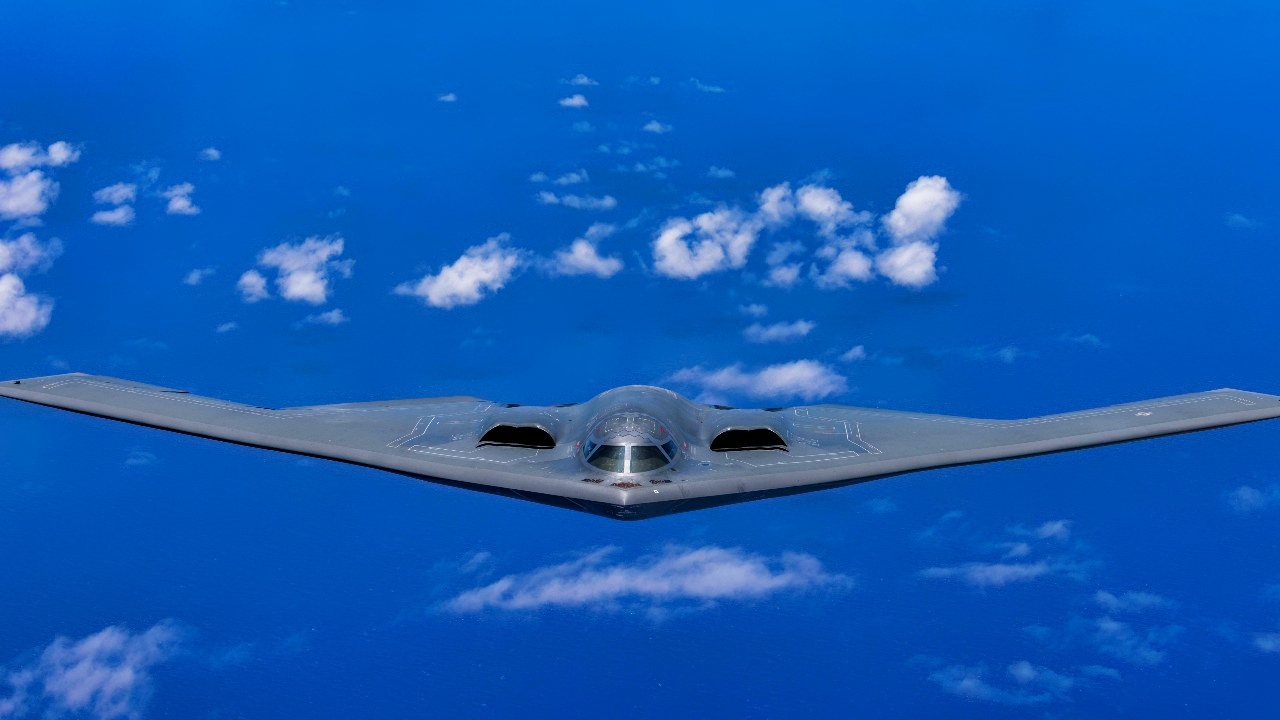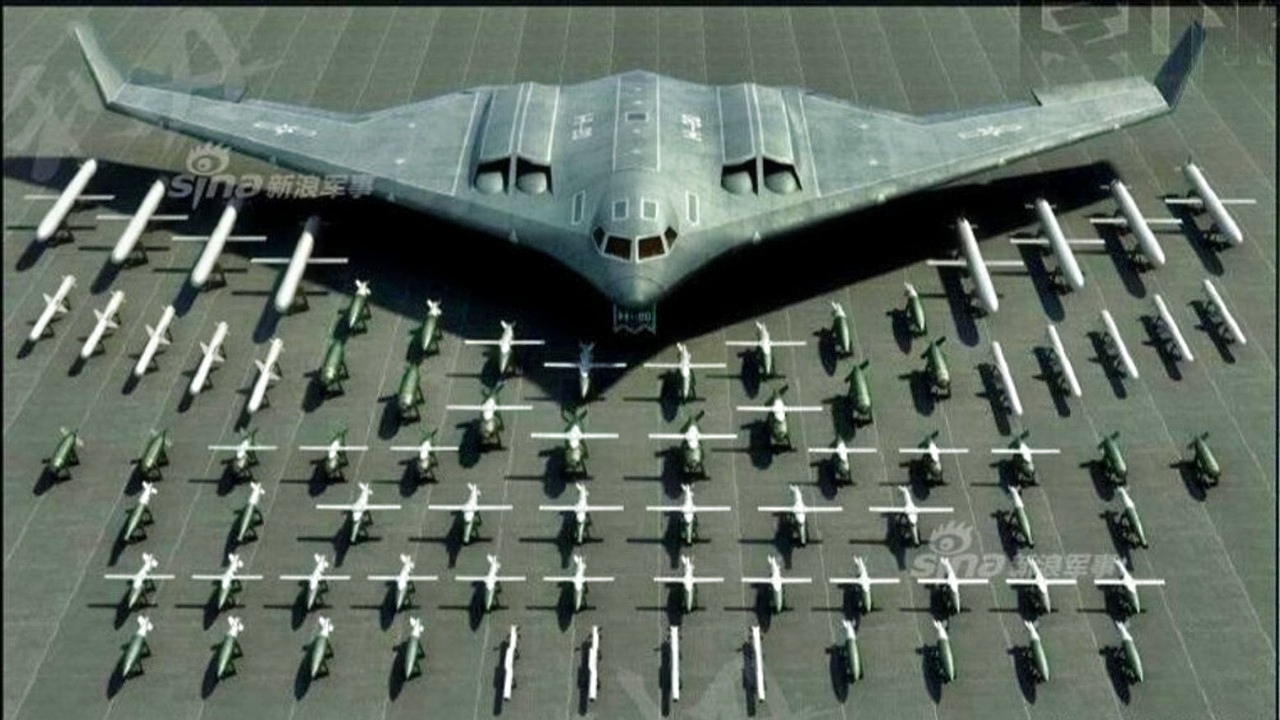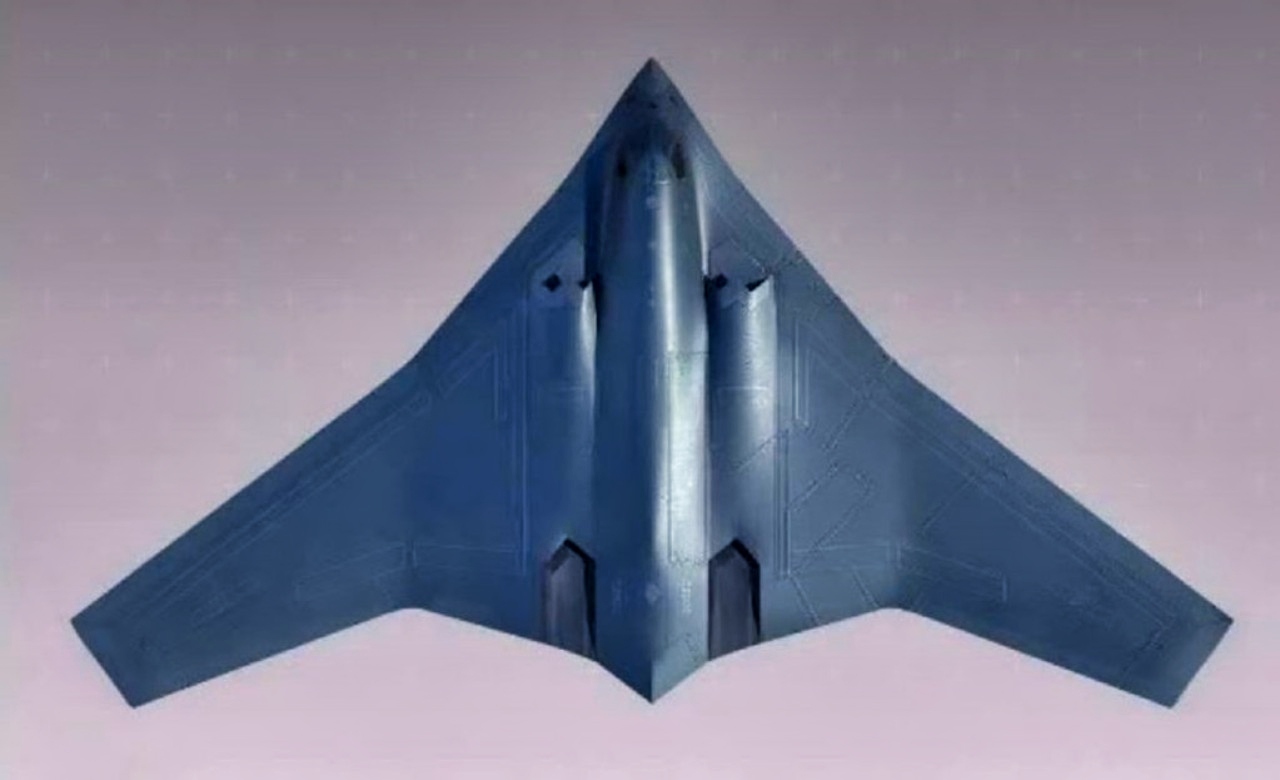Key Points and Summary – China’s H-20 stealth bomber, publicly announced in 2016 as its answer to the U.S. B-2 and B-21, remains elusive nearly a decade later.
-Despite its strategic importance for China’s nuclear triad and power projection, there’s been no confirmed prototype flight or production evidence.

A B-2A Spirit bomber assigned to the 509th Bomb Wing conduct aerial operations in support of Bomber Task Force Europe 20-2 over the North Sea March 12, 2020. Bomber missions enable aircrews to maintain a high state of readiness and proficiency, and validate U.S. global strike capability. (U.S. Air Force photo/ Master Sgt. Matthew Plew)
-U.S. intelligence suggests a debut isn’t likely until the 2030s. The delay is speculated to stem from immense technical hurdles (especially engines and stealth materials), industrial constraints, or a potential strategic shift in priorities.
-Currently, the H-20 functions more as a “phantom bomber”—a signaling tool and deterrent based on potential rather than proven capability.
Where is the H-20, China’s Elusive Stealth Bomber?
For almost a decade, Chinese state media and independent defense analysts have referred to the coming H-20 stealth bomber as a significant upgrade to Beijing’s strategic air power. The program was publicly acknowledged in 2016, when then-PLAAF commander Ma Xiaotian announced the development of a new generation long-range bomber.
From the outset, the new aircraft was positioned as China’s answer to U.S. strategic bombers like the B-2 Spirit and the forthcoming B-21 Raider – but the B-2 Spirit already exists, and the B-21 Raider – despite delays – is on its way.
Meanwhile, after almost ten years, the H-20 remains officially under development with no confirmed prototype flight, no verified production, and scant public evidence of the program’s progress. The question is: why the delay, and what could the silence indicate.
According to the available information, which is scarce, the H-20 will be a long-range stealth bomber built on a “flying-wing” layout, capable of both nuclear and conventional missions
The U.S. Department of Defense believes that the bomber will have a range of more than 10,000 km and may debut sometime in the next decade.
Analysts have also noted that the aircraft could have an unrefuelled range of up to 13,000 km and a payload of tens of tons. Strategically, the bomber is intended to provide China with a genuine strategic air leg—a strategic bomber capable of complementing its nuclear triad.

A U.S. Air Force B-2 Spirit bomber flies over the North Pacific Ocean, June 13, 2024. The speed, flexibility, and readiness of the Air Force’s strategic bombers plays a critical role in deterring potential adversaries and signaling unwavering support to allies and partners. Counter-maritime missions provide valuable training opportunities to improve interoperability and demonstrate that Air Force forces are capable of operating anywhere, anytime, to meet any challenge decisively. (U.S. Marine Corps photo by Sgt. Jose Angeles)
Should China successfully build and deploy the bomber, it would challenge the regional force posture of the United States in the Indo-Pacific and dramatically alter dynamics in the region in China’s favor. The promise of the program, therefore, is significant.
In terms of observable data, so far, we don’t have much.
The only confirmed public milestone is the 2016 announcement, while Chinese state media has hinted on multiple occasions that the program is making progress. U.S. intelligence assessments, however, have stressed that the H-20 is unlikely to enter service until sometime in the 2030s.
It’s worth noting that there is a notable absence of credible satellite imagery showing the aircraft in development, no first test reports, and no leaked prototype photographs, which one would typically expect for a major aircraft program at a similar stage in the U.S. or Russia.
A lack of photographs does not necessarily mean that the program is not making headway, but it does indicate that it may not be making the necessary progress to be fielded soon.
What’s Going On?
The lack of public information and the likely delayed progress on the program can be explained in several ways, though all are largely speculative. Chief among them is the fact that building a stealth bomber like this is an enormous technical challenge.
Stealth bombers require advanced materials, low-observable manufacturing expertise, high-efficiency engines, and an industrial base to support their construction.
China still grapples with engine technology and low-observable coatings, repeatedly falling behind American innovation.
Analysts have repeatedly warned that this could be a significant reason behind the program’s delays.
In terms of China’s industrial base, there are challenges. While China is rapidly advancing its military capabilities and is arguably one of the best-equipped countries in the world to streamline new manufacturing processes, it also has many simultaneous programs underway – from fighters to naval aircraft.
A possible explanation for the delay, then, could be that the PLAAF has shifted its focus to more immediate platforms, such as the upgraded H-6 bomber or long-range cruise missile forces.
Additionally, the cost and complexity of a stealth heavy bomber may have forced a tough decision to be made: to continue aggressively, or to slow down, continue development gradually while addressing immediate needs, and allow the concept to serve as a deterrent rather than a near-term asset that can be fielded.
The H-20’s public existence – even if it isn’t yet fielded, and it isn’t – serves multiple purposes for Beijing. It serves as a deterrent, a signaling tool that demonstrates technological progress, and it can also complicate adversary calculations and planning.
H-20 Bomber Artist Rendition Photos

H-20 Bomber. Chinese Internet Social Media Screenshot.

H-20 Bomber from China Artist Rendition. Creative Commons.

China’s H-20 Stealth Bomber. Image Credit: Creative Commons.
The H-20 Bomber in 1 Word: Ghost
In this sense, the H-20 is a sort of “phantom bomber” – an asset that exists in theory, and could be fielded in the future, but on a timeline that adversaries cannot accurately predict.
For this reason alone, any development progress may have been deliberately hidden from the world – but even if it isn’t, its possible existence complicates planning enough that it is worth keeping up the charade.
For now, all the world knows is that there has been no public first flight, no sightings of a prototype, and no leaks. The absence of all of these things could suggest that the program is far behind its schedule, that it is deeply classified and more advanced than Beijing would like the world to know, or that the H-20 is actually a concept retained for future use but not prioritized for near-term service.
Until China proves otherwise, the H-20 represents more of a statement of intent than anything.
About the Author:
Jack Buckby is a British author, counter-extremism researcher, and journalist based in New York. Reporting on the U.K., Europe, and the U.S., he works to analyze and understand left-wing and right-wing radicalization, and reports on Western governments’ approaches to the pressing issues of today. His books and research papers explore these themes and propose pragmatic solutions to our increasingly polarized society. His latest book is The Truth Teller: RFK Jr. and the Case for a Post-Partisan Presidency.
More Military
China’s New Aircraft Carrier Has 1 Big Advantage over the U.S. Navy
The B-21 Raider Stealth Bomber Has a New Problem: The Government Shutdown
The B-1B Lancer Bomber Has a Message for the Air Force
The B-2 Spirit Bomber Has 1 Big Advantage over Russia and China
Nuclear Aircraft Carrier USS Nimitz Will Be Retired Next Year: It Might Be a Big Mistake










